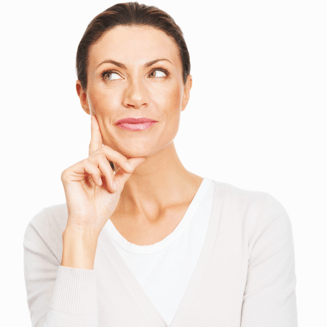What happens to our skin as we age?
 From wrinkles to crows’ feet and sun spots, our skin changes a lot as we age. The main factors that contribute to how old we look include the shape of our face and the glow of our skin, as well as the fine lines and wrinkles that develop on the surface.
From wrinkles to crows’ feet and sun spots, our skin changes a lot as we age. The main factors that contribute to how old we look include the shape of our face and the glow of our skin, as well as the fine lines and wrinkles that develop on the surface.
Of all our organs, the skin is most visible, so its health and appearance have a big impact on our self-esteem. In fact, Australians spend around $5 billion every year on skin care products and treatments in a bid to improve their self-confidence and slow down the ageing process.
So, what happens to our skin as we age? It comes down to both intrinsic and extrinsic factors.
Intrinsic ageing of the skin
Intrinsic ageing involves natural, predicable influencers such as our genetic make-up and skin colour. As we age, the top layer of skin (called the epidermis) becomes thinner and more transparent, causing the skin to appear less luminous. This is how we lose our skin’s youthful glow.
The epidermis can also begin to develop growths like seborrhoeic keratoses, as well as spots caused by UV exposure such as freckles, pigmentation, sun spots and skin cancers. Sun damage is the leading cause of skin cancer and early signs of skin ageing, including wrinkles. Majority of sun damage occurs during our younger years, but the effects are often not seen until later in adulthood.
Over time, fat is lost from different parts of the face, affecting our perceived age. Dark shadows form under our eyes when fat disappears from this area, making us look tired. Lines start to extend out from our nose as the fat pad around the cheeks moves downward. Our blood vessels also thin, leading to easy bruising, and become more visible on the surface of the skin.
The layer of skin beneath the epidermis (called the dermis) loses collagen and elastin, causing sagging and wrinkles. The decline in collagen is mostly due to the decreased function of the cells that make it and an increase in the enzyme that breaks it down. This leads to the development of frown lines, crows’ feet and wrinkles, as well as thinning of the lips and a drop in the brow.
Moving towards our 50s, collagen and elastin levels decrease further, causing deeper wrinkles around the face. Our eyebrows and nasal tip droop, and our neck sags as our skin suffers a loss of elasticity.
Intrinsic factors aren’t the only contributors to how we age. Our lifestyle, environment and habits also play a role.
Extrinsic ageing of the skin
Extrinsic ageing is brought about by environmental factors such as UV exposure, smoking and air pollution. This means we don’t always look our age. For example, UV radiation breaks down elastin and causes sagging. The skin also bruises and tears more easily and takes longer to heal. So, too much time in the sun can take its toll on our skin, speeding up the ageing process and causing us to look older than we are.
Smoking results in insufficient oxygen supply to the skin, blocking blood vessels and reducing immunity. Skin cancers can develop more easily in these conditions and the levels of enzyme that break down collagen increase, resulting in wrinkles and volume loss. Smoking also increases skin dryness, coarse texture and a dull appearance on the skin’s surface and increases fine lines and wrinkles around the mouth.
Research also suggests that air pollution can speed up skin ageing, with 20 per cent more pigment spots found on the forehead and cheeks of people exposed to soot and particles from traffic.
Differences in ageing
Why do people of different ethnicities and skin colour appear to age differently? Different skin types have varying amounts of elastin, collagen, pigment cells and lipids.
Darker skin has larger melanosomes, which produce, store and transport melanin. Melanin gives skin its colour. More melanosomes provide stronger protection against UV radiation in darker skin types, like an inbuilt sunscreen. Possessing thicker, larger and more numerous fibroblasts (cells that make connective tissue and collagen) also mean that people with darker skin types won’t wrinkle as easily.
No matter our skin type, there are many steps we can take to optimise our skin health, including adopting good sun protection habits, avoiding smoke, and maintaining a healthy skin care routine.
If you are interested in finding out more about your skin health and discovering which treatments may help to repair and rejuvenate your skin, please give us a call on 6240 4820 to book your consultation with one of our Aesthetic Doctors or a complementary consult with an Aesthetic Nurse using the SkinScope skin imaging tool.
 New Town Skin Repair Centre
New Town Skin Repair Centre
137 New Town Road, New Town TAS 7008
P 6240 4820
- Tags:
- Research
